Menus
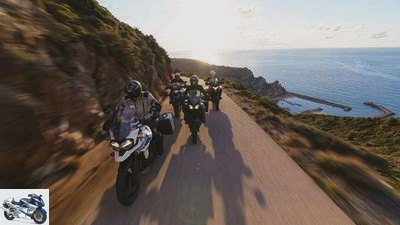
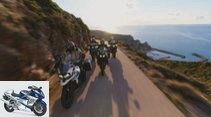
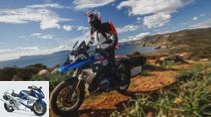
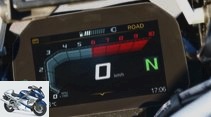
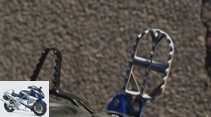
36 photos
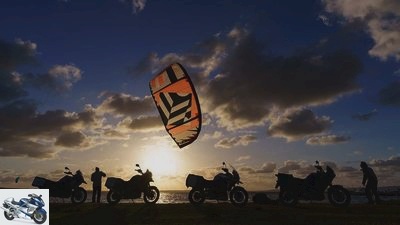
1/36
BMW R 1200 GS Rallye, Honda VFR 1200 X Crosstourer, Triumph Tiger 1200 XCA and Yamaha XT 1200 ZE Super Tenere in a comparison test.
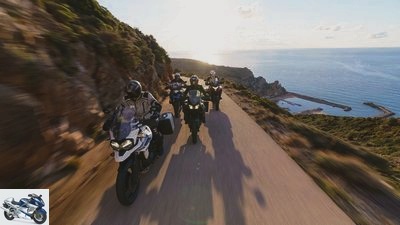
jkuenstle.de
2/36
We were looking for the best surfer – on land and on the water. Welcome to Sardinia.
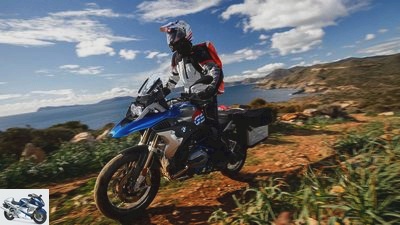
3/36
First candidate in the race: the BMW R 1200 GS rally.
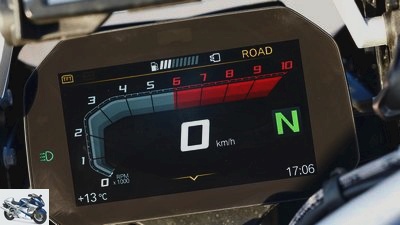
4/36
The 6.5-inch TFT instrument on the BMW is not stingy with information and can also be operated very intuitively.
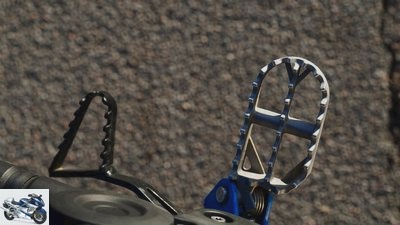
5/36
Jagged notches for a lot of hold, but the brake lever and notches are not in alignment and only slightly overlap.

6/36
Rotary knob for height adjustment of the mini disc. Setting range: from no to little wind protection.
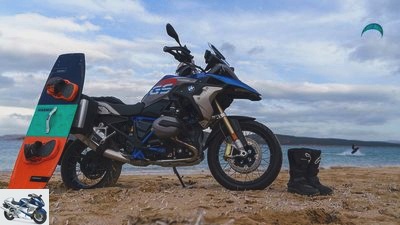
7/36
Get out of your motorcycle and into your wetsuit: the BMW on the beach in front of the picturesque Isola dei Gabbiani.
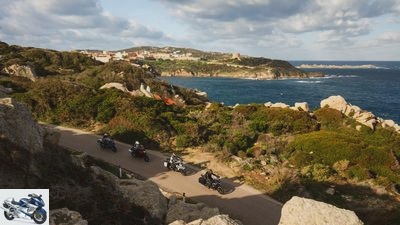
8/36
Imposing stone cliffs around Santa Teresa Gallura.
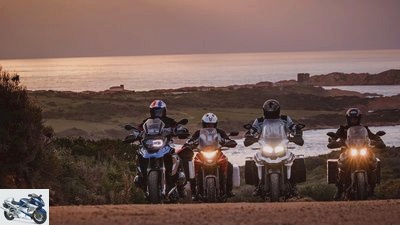
9/36
Front gravel and in the background the impressive Torre Aragonese on the Isola Rossa peninsula.
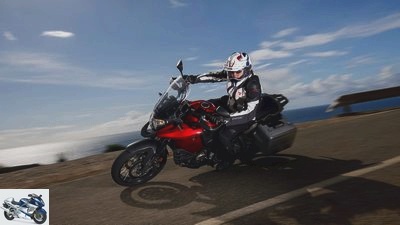
10/36
The second in the race: Honda VFR 1200 X Crosstourer.
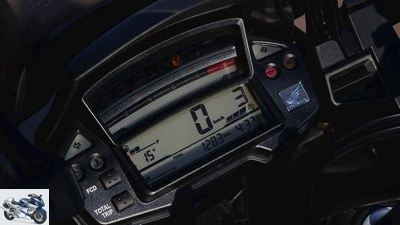
11/36
Less is hardly possible. The cockpit of the Honda is rudimentary, the tachometer is difficult to read.
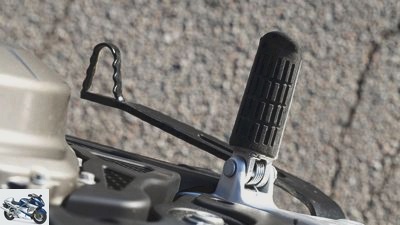
12/36
Safe step: The brake lever is easy to reach, but the catch has no notches and has a rubber pad.

13/36
Keep it simple, the motto of the window adjustment: pull the lever, adjust the height, engage the lever again. Finished.

14/36
Stability is the domain of the Honda chassis, and you need clear impulses for weaving.
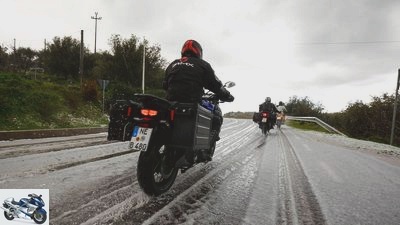
15/36
Limited progress: hail slush shortly after Cuglieri despite almost seven degrees plus.
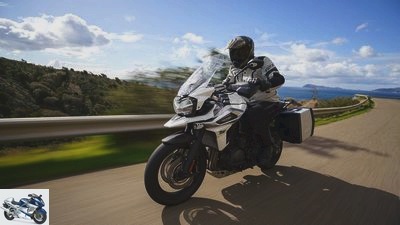
16/36
The third in the group is the Triumph Tiger 1200 XCA.
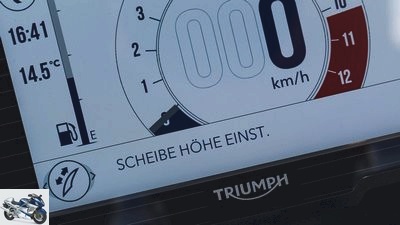
17/36
The height of the British woman’s disc can be adjusted using the menu item on the easy-to-read TFT instrument.
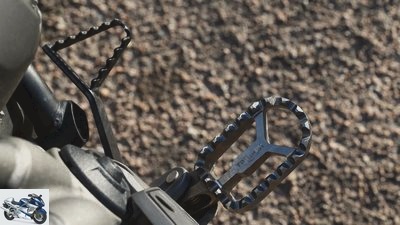
18/36
Two points please: Triumph has attached the brake pedal, sure-footed and easily accessible.
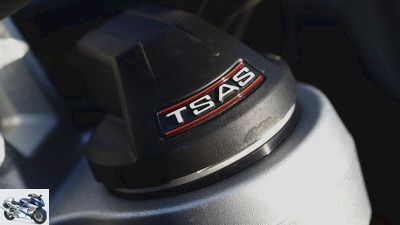
19/36
TSAS for Triumph semiactive suspension, but only at the rear. There is only one electronic damping adjustment at the front.
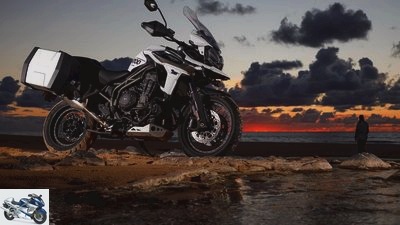
20/36
Triumph’s predator also shines in the delicate light of the sunset.
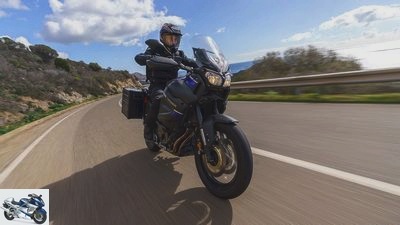
21/36
The quartet is completed by the Yamaha XT 1200 ZE Super Tenere.
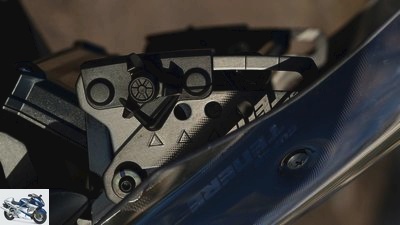
22/36
The height of the disc can be adjusted several times, but the mechanics are too complicated.
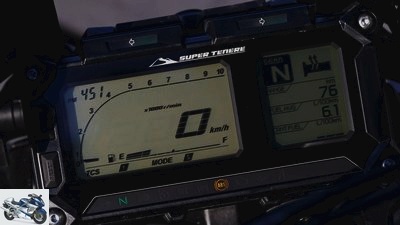
23/36
The XT soberly divides all information on two LC displays, the menu navigation takes a little practice.
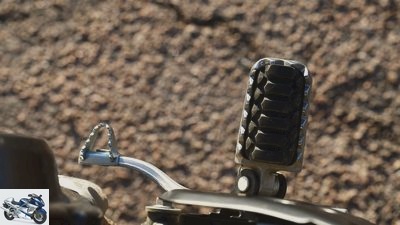
24/36
Rubber and spikes on the pedals of the Yamaha, whose brake lever is also well inside.
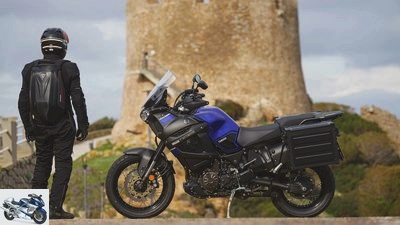
25/36
Not the lightest, but the XT 1200 ZE inspires in handling and driving.
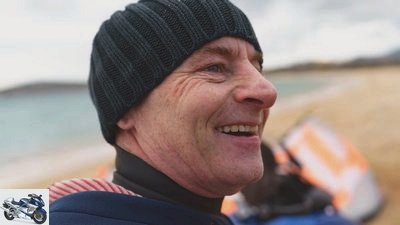
26/36
Karsten Schwers, top tester: “The GS can do everything, glide smoothly and let it rip. The overall package is just right, from front to back “
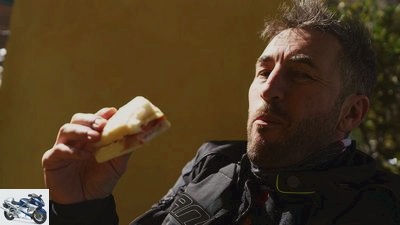
27/36
Sven Loll, photo driver: “The Yamaha is easy going, is super easy to direct. Only their rests, they grind too early “
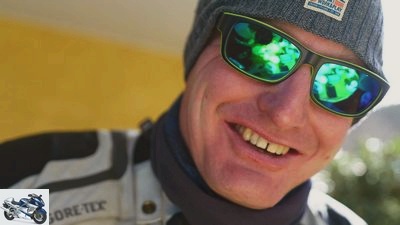
28/36
Jens Moller-Tollner, test editor: “The Triumph as the all-inclusive offer: everything is included. The first choice for long, relaxed journeys “
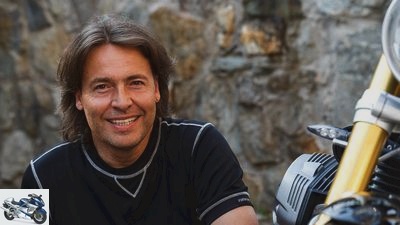
29/36
Peter Klein, photo driver: “Solid mechanical engineering, super-stable chassis – I like the Honda as a reliable partner for many kilometers”
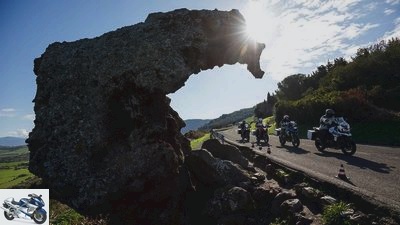
30/36
Roccia dell’Elefante near Castelsardo-
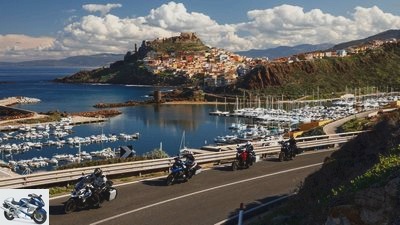
31/36
When it comes to everyday use, the Triumph doesn’t show anything. Top wind protection, bright light, extensive equipment and maximum payload.
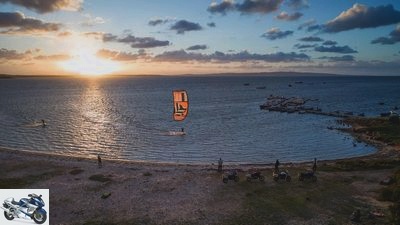
32/36
When it comes to safety, however, BMW is ahead. Above all, the assistance systems were decisive here.
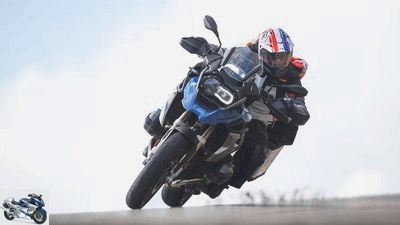
33/36
Overall, BMW also makes the race. It remains the benchmark among the cardan enduro.
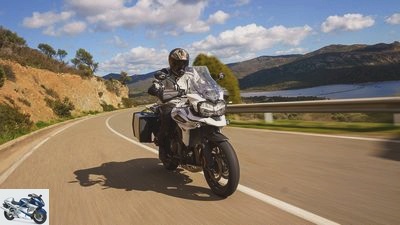
34/36
The triumph just keeps getting better. Nobody can fool you, especially in terms of equipment. A more finely tuned fork and more pressure in the lower speed range would, however, be desirable. At the end there is place 2.
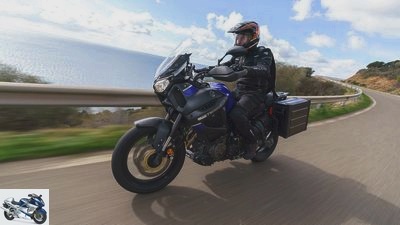
35/36
If you want to feel the original enduro feeling, the Yamaha is the place for you. Good-natured driving behavior, safe driving. However, there is some pressure missing in the lower corridors.
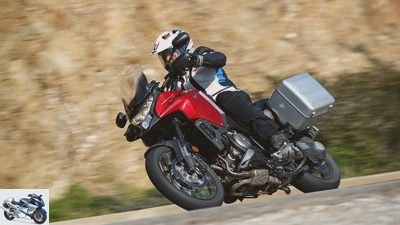
36/36
The bottom of the ranking is the Honda, which doesn’t mean it’s a bad bike. Good workmanship but poor equipment. The chassis inspires with its quiet driving style.
R 1200 GS, Crosstourer, Tiger 1200 and Super Tenere
Big travel enduros put to the test
The Triumph Tiger 1200 XCA is tested by the cardan travel enduro competition BMW R 1200 GS Rallye, Honda Crosstourer and Yamaha XT 1200 ZE Super Tenere. The comparison took place in Sardinia.
Karsten is still beaming. He used the last warm weekend in autumn to jet towards the Netherlands. The man in his mid-forties is severely infected with the kite virus. Board under your feet, the kite stretched, the more than 20 meter long lines on pull, ride close to the wind over the water and sweep through the waves with perfect momentum. Pure happiness for the MOTORRAD top tester.
Buy complete article
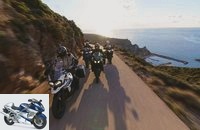
R 1200 GS, Crosstourer, Tiger 1200 and Super Tenere
Big travel enduros put to the test
R 1200 GS Rallye, Hondas Crosstourer and Yamaha XT 1200 ZE Super Tenere the assembly test of the kite board. Works for everyone. The story is up. One goal is still missing. A moment later the word “Sardinia” echoes through the office. What sounds a bit crazy turns out to be a hot tip for two-wheelers addicted to curves at second glance. The way to the ferry port in Livorno, which we use, is shorter than to travel to destinations on the Iberian Peninsula. The night ferry covers the remaining kilometers as a floating hotel. The cost of the crossing is roughly the same as a normal overnight stay on the mainland.
Rain, strong and relentless, awaits the test motorcycles in Sardinia. The Triumph driver grumbles the least. Finally he is sitting on the Tiger 1200 XCA. Seat heating, heated grips, electrically height-adjustable windows and thus good wind and weather protection keep the crackling moisture away.
BMW R 1200 GS rally.
Top tester Karsten, on the other hand, did not keep the heated handles on the BMW R 1200 GS Ralley from shivering. The small disc of the rally version looks chic, but does not protect. Peter on the Honda has to do without standard heating goods, but the four-way and easily adjustable window shields him well from the wet. That would also apply to Sven on the Yamaha. But: As complicated as the XT 1200 ZE’s window adjustment is designed, it takes far too long to lock it in the highest position.
We head for the next cafe dripping. Isolated blue sky flashes through dark clouds on the horizon. A cappuccino later, the wet asphalt gray slowly gives way to dry sections. Time to curl up – west as a goal. It is amazing how nimble the large cardan enduro can sweep through the arches. Put in sixth gear and let the power of the engines carry you across the road – they all master this in an exemplary manner. Regardless of whether it is a BMW boxer, a two-in-a-row from the Yamaha, a triple from the Triumph or a V4 from Honda, from 2,000 revs they convince with perfect concentricity. The bottom line that the two-cylinder run a bit rougher and the Triumph goes to work with cuddle-like suppleness, only remains as a difference in detail. Rather, the gears come to the fore when traffic lights or zebra crossings warn to stop and thus to change gears. BMW and Triumph both have a blipper. In other words: You can go up and down without having to grip the clutch. Theoretically. In the case of the Englishwoman, the corridors slide from top to bottom without resistance, in the other direction, at most, the slight interruptions in traction disturb. With the Bavarian flat twin, they are very short. On the other hand, there is a lot of hiccups when changing gears down, so only the grip on the clutch helps. Honda and Yamaha do without electronic aids. And the Crosstourer proves: the best gear is still the one with perfect, flawless function. The Honda sets the standard. The Yamaha is more rustic from this point of view, demands a courageous step on the gear lever.
The photographer wants to see the motorcycles in the sand. First attempt: pushing. Pointless! The four prove that they not only offer a lot of motorcycle, but also a lot of weight. In the order from light to heavy, each with a full tank: BMW 256 kg, Yamaha 271 kg, Triumph 272 kg, Honda 283 kg. The suitcases add another 20 pounds more. Curses fill the silence. Then just with engine power. It takes one wheel revolution until every tread groove on the Tourance Next on the rims of the BMW and Triumph and the Bridgestone Battle Wing 501/502 on the Honda and Yamaha is greased. The traction controls turn out to be a further obstacle. The TC of the Honda regulates so rapidly that the engine dies despite careful use of gas. As effectively as the fall preventer work on asphalt, here they bring the propulsion to a standstill. So turn it off. Works easily with BMW, Honda and Yamaha, with the Triumph it takes a few more clicks in the menu.
The red fireball sinks ever lower towards the horizon. Time for the hotel. The SS 133 takes you to Santa Teresa Gallura. The next morning begins with the determination of the consumption values. Since the south of the island is attractive, we first speed north-west on the SS 133 and SS 127, before the route from Porto Torres to Oristano always climbs along the west coast of Sardinia. Time to think about seating comfort. The Yamaha comfortably embeds its pilot. Despite the largest tank, at least 23 liters fit into the fuel barrel, her knee is very narrow. The two-way height-adjustable seat cushion and the low footrests take away any tightness from the knee angle. The wide handlebar lies comfortably in the hand. And because the hand levers, like all the others, are adjustable, the XT 1200 ZE impresses with a successful compromise between a comfortable and dynamic seating arrangement.
Triumph is carved differently. Where the Yamaha almost scores with barreness, it lures with opulence. No other has more features. Adjustable seat height. Seat cushions: heated for the driver and the pillion passenger.
Honda VFR 1200 X Crosstourer.
In addition, well-placed notches, a handlebar that has now been moved further towards the driver and cranked more backwards – this is how the Englishwoman emphasizes driving comfort. Almost as cuddly as the line through the fur of a Persian cat, the tiger trainer feels at home in their midst. Only the triplet and the tank placed above it disturb a bit. Both build broad and powerful. After all, 20 liters fit into the petrol bunker.
It looks sportier on the BMW. The knee angle is narrower, the bench is only spartan upholstered. In contrast to the standard GS, the seating furniture in the special Rallye model is made from one piece. The height adjustment is missing. In return, the wide handlebar lies perfectly in the hand. And because the knee joint on the 20 liter tank is tight, it is good for traveling and sharpening bends with small gaps.
The Honda driver has to accept more restrictions in this regard. As with the British, the engine is wide. Not ideal. In addition, the handlebars are high, the risers are powerful. The Crosstourer is happy to forgive the fact that the bench only knows one height. But the fact that the footrests are so far forward affects the seating comfort quite heavily. Very passive, with little pressure on the front wheel, comfortable, but strangely inactive, it crouches behind the long, 21.5 liter tank.
Drivers warning wildly with the flasher suddenly sweep the thoughts of the seating arrangement away. The road in front of us is wet and the rain is mild, so there is no need for any hazard warnings. Or is it? One curve later, the tires of the quartet slide sensitively outwards. Shortly afterwards we park in Cuglieri, 480 meters above sea level, in a centimeter-thick slush of snow and ice. The outside thermometers of the great TFT displays from BMW and Triumph, which are colorful and rich in contrast, offer a shell of information, as well as the factually designed LCD cockpits of the Yamaha and the Honda show seven degrees. The day’s destination in Carbonia is a long way off. After Cuglieri, the altitude difference disappears, the white road leads downhill. We wait for the next car, ask to drive slowly ahead and feel us lined up in the lane behind at walking pace. Because all motorcycles master the sensitive game of braking, accelerating and maintaining balance even at this speed, a snow-free lane will soon be in front of us again.
Now it’s time to make up time by taking the motorway towards Guspini. With wheelbases of around 150 centimeters, the four lie quietly on the track, even with suitcases. Subtle differences can still be felt. Despite the shortest wheelbase (1496 mm) and caster (95 mm), the BMW sweeps straight ahead with the greatest stability. The Honda follows her closely. With its chassis data, it symbolizes the thesis that length runs. 1595 millimeters wheelbase, the flattest steering head angle of 62 degrees and a caster of 107 millimeters – that’s how it hisses safely straight ahead. Thanks to the flexible case holder, the Triumph has overcome the tendency to pendulum of the previous model. Nevertheless, it is more sensitive to interference than the BMW and the Honda. It combines a relatively long wheelbase (1520 mm) with the steepest steering head angle (66.9 degrees). Also noteworthy: The lower handrails, which limit the pendulum angle of the suitcase, should sit snugly in the recesses provided in the plastic luggage. If the overlap, which can be adjusted using the elongated holes in the handrails, is too small, the cases can swing back and forth indefinitely. The Yamaha cases are rigidly mounted. When it comes to straight-line stability, the problem with stability is the somewhat too weak coordination of fork and damper. It hangs low in the springs and allows more movement than the others. However, none of the cardan bikes are critical.
Before going overland to the port city of Olbia, you have to make a detour to the picturesque SP 71 coastal road around Capo Malfatano.
Triumph Tiger 1200 XCA.
After two corners, every driver thinks they are in the perfect corner flow. Grip until the notches scratch. Bend follows bend. And the sea always in sight. Perfect terrain for the quartet, which interprets the subject of dynamics in fundamentally different ways.
This also shows the further way north, including the curved roller coaster SS 389. Let Triumph as the newest member of the Kardan travel enduro family take precedence. Her three-of-a-kind is predictable, but it lacks the powerful punch due to low revs. Its gear ratio allows over 250 km / h, reality slows it down at 211 km / h. Your engine revs the highest, but some horses owe it to the promised power of 141 hp. In addition, its semi-active chassis, which, like the BMW, has an automatic adjustment of the spring base at the rear to the load condition, rolls comfortably over bumpy roads, but the front lacks stability when it is brisk. In large lean angles, the front wheel nervously drives towards the outside of the curve. Above all doubt: the brake. They are characterized by a pressure point that can be sensitively modulated and a bold effect.
The Honda cannot serve that. Your stoppers grip more bluntly and require greater hand strength. The tide is turning on the chassis. As with straight-line stability, the Crosstourer is also very full in curves, but requires clear and clear impulses for changing direction.
Yamaha XT 1200 ZE Super Tenere.
At 1237 cubic meters, it has the largest engine, but the bottom is even more lacking in acceleration than the British one. He just doesn’t get into the puss. A shorter translation would help. The transmission allows over 250 km / h, in reality it is over at 209 km / h. Letting the V4 always cheer above mid-revs helps, but the Honda jerks markedly when the load changes, thus further reducing the research fun.
Off to the Yamaha. Her maxim is: aim at line, hit line. At speeds within the speed limit, this always works. Above that, things get shaky, the electronically adjustable spring elements of the XT 1200 ZE allow a lot of movement. Even when shifting gears, the motorcycle twitches briefly. Without a load the Yamaha sags, with a load it pushes the motorcycle up again. The electronically adjustable damping and the different setups for the preload, which can also be adjusted at the push of a button, do not change anything.
As with the Honda, the brakes respond a bit lackluster, the crisp bite is missing. And then there’s the Yamaha engine. In itself, the two-in-a-row imitating a V2 with a 270 degree crank pin offset brings the best fundamentals, is also translated appropriately. Whenever a lot of vigor is required to accelerate out of the corners, the Yamaha has to let the rest of the pack go. Your twin cannot keep up with the powerful performance of the competition that the XT pulls away.
To cut a long story short: if you are looking for driving dynamics, you will find it in its most pronounced form at BMW. The engine, which is perfectly geared to top speed, starts like a bull at the lowest speeds, rushes forward brilliantly in the middle of the speed and only loses some of its vigor above 7,000 rpm. But until then you rarely have to turn it off, because the power underneath is enough for any fun. With all the dynamics, the boxer offers cultivated manners, masters load changes without abnormalities on the part of the engine or the cardan. In addition, the semi-active chassis provides an exemplary combination of stability and maneuverability, decelerating the brakes vehemently with little manual force. Or to put it in a nutshell: The R 1200 GS Rallye makes you casually fast. This is what makes the others bite their teeth.
In front of us is the mighty gate of the ferry for the return journey from Olbia towards Livorno into the evening sky. The mainland calls. What fun. We are still struggling with the dizziness after the ride through Sardinia’s curve Eldorado. A recommendation, especially in winter and spring, because the costs are manageable. What the motorcycles do their part. With a consumption of between five to six liters, none of them steps out of line in the 100 km standard lap. Only in the final account of the entire trip is it noticeable that Honda (7.0 liters) and Yamaha (6.5 liters) allow each other a good sip more. The engines, we already had them. If you turn a lot, you also need more fuel. BMW (5.6 liters) and Triumph (6.0 liters) are more economical.
MOTORCYCLE test result
1st BMW R 1200 GS rally
More bend sweeps in enduro format than touring motorcycle, the large GS remains the benchmark among cardan enduros, even in the more cautiously equipped rally version.
2. Triumph Tiger 1200 XCA
The big tiger just keeps getting better. When it comes to equipment, you don’t fool anyone else. A stronger start from the lower speed range and a more finely tuned fork would be nice.
3. Yamaha XT 1200 ZE Super Tenere
The XT comes closest to the original Enduro feeling. She immediately gives confidence, drives good-naturedly. It should only appear more powerful in the lower corridors.
4. Honda VFR 1200 X Crosstourer
The Crosstourer lands behind. It’s still a good motorcycle. Their workmanship is correct, the equipment less so. Top: the conventional chassis, which can not be disturbed.
Travel rating of the big travel enduros
The large cardan enduros have long since established themselves as excellent motorhomes. The travel rating as an extra to the test clarifies which kilometers you collect the most casual kilometers.
In the past, sports tourers were in power when the next destination was several hundred kilometers away and you wanted to gaseous vigorously on site. Travel enduros have now challenged them for this rank. With their upright seating position, open knee angles and sufficient power with over 100 HP, which is still good for brisk progress even when fully loaded, they are far ahead in the favor of motorcyclists who like to travel. BMW’s R 1200 GS, which has been the frontrunner in registration statistics for many years, impressively underpins this. For the place in the sun it is not enough for the boxer in the travel evaluation in this test. As a “rally” variant, the BMW does well, but the Triumph is clearly ahead. In addition to aspects such as seating comfort, wind protection or consumption, which were weighted more heavily compared to the 1000-point test, criteria such as the seat height including assessment of the step length are decisive. Adjustable benches are earning more counters because, ideally, they allow short people to stand safely, but still offer longer contemporaries a comfortable place. With the narrowest waist, the Yamaha secures advantages here, closely followed by the Triumph. In addition, the BMW lacks the main stand. On cardan motorcycles, this is less necessary for maintaining the final drive than for safe loading. Although that calls for one but: If you want to put the Honda, Triumph or Yamaha on the central stand with several kilos of luggage, you have to pack a lot. Strength is required. This is not necessary to adapt the spring preload to the load. BMW and Triumph do it automatically – great! Honda and Yamaha have at least one hand wheel to change the spring base at the rear.
One aspect in which BMW can again book the most meters is the luggage storage. The accordion principle of their suitcases impresses with a variability that the others lack. In addition, the suitcases offer more luggage space than the competitors if required. The Yamaha system in particular is a bit small. A full-face helmet does not fit in. Nevertheless: If you really want to travel many kilometers in comfort, the Triumph is the best partner for endless journeys. In addition to the aspects already mentioned, this is primarily due to the advantages that were already mentioned in the 1000-point test: extensive equipment, very good wind and weather protection. And heated seats. They alone are worth a tip.
Related articles
-
The enduro mega test: travel enduros up to 1200 cm³
44 pictures 1/44 The final opponent of BMW, the Triumph Tiger 800 XC. 2/44 Wide handlebars, fat motors, big …
-
Travel enduros with 19-inch front wheels tested
fact 44 photos fact 1/44 KTM 1190 Adventure, Honda Crosstourer, Moto Guzzi Stelvio 1200 8V, BMW R 1200 GS, Yamaha XT 1200 Z Super Tenere Worldcrosser and…
-
Comparison test of adventure travel enduros
markus-jahn.com 25 pictures markus-jahn.com 1/25 With a larger front wheel and off-road optics, Aprilia gives the Caponord in the rally version a …
-
2017 travel enduros from BMW, Ducati, Honda, KTM and Triumph in a comparison test
Rivas 50 pictures Rivas 1/50 2017 travel enduros in a comparison test. Rivas 2/50 BMW, Ducati, Honda, KTM and Triumph in the fight for the rule of …
-
The travel enduros of the Alpine Masters 2012 in comparison
Gargolov 16 pictures Gargolov 1/16 Moto Guzzi Stelvio 1200 8V: She cannot be called light-footed. To reach them over narrow serpentine routes …
-
Comparison test travel enduro: Sweden to the North Cape
Jahn 28 pictures Jahn 1/28 The operation of the Multistrada has also changed: A control center for electronics and motor directly on the handlebar. Jahn 2/28 …
-
Yamaha XT 1200 Z Super Tenere: Enduro travel enduro in the long-term test
Image: Bilski 20 Images 1/20 The Yamaha XT 1200 Z Super Tenere doesn’t care about the goals: whether for camping in the Allgau, in a North German hotel or for …
-
Also for beginners: Enduros of the 650 class put to the test
bilski-fotografie.de 25 pictures Bilski 1/25 The four middle class enduros on a test drive in sunny southern France. Bilski 2/25 BMW G 650 GS in the …
-
Adventure enduros in comparison test
Jahn 44 pictures markus-jahn.com 1/44 Triumph Tiger 800 XCA. markus-jahn.com 2/44 Honda CRF 1000 L Africa Twin. markus-jahn.com 3/44 Honda CRF 1000 L …
-
Travel test Stockholm-North Cape-Stockholm
Travel test Stockholm-North Cape-Stockholm Discover the possibilities The dream: through Scandinavia to the North Cape. Seven tourers, seven drivers, the…